Q
How to open the hood of Subaru Crosstrek?
To pop the hood on a Subaru Crosstrek, start by locate the hood release lever under the left side of the driver’s seat. Give it a good pull until you hear the hood slightly pop up. Then head around to the front of the car, stick your hand into the gap at the center of the hood’s leading edge, and find the secondary safety latch—it’s usually a small lever or button. Push or flip that latch to the side while gently lifting the hood up. The Crosstrek uses this double-latch setup to make sure the hood stays put while you’re driving, which is a solid safety move.
Here in Malaysia, with our hot and rainy weather, it’s super important to regularly check the fluid levels and components under the hood. Keep an eye on things like coolant and brake fluid especially—they’re key to keeping your ride running smoothly. If you notice the hood feels heavy or tough to lift, check the support struts to make sure they’re working right. A little lubricant on the hinges can also help if needed. And let’s not forget Subaru’s unique boxer engine layout—when you’re poking around, take note of how the hoses and wiring are routed to avoid accidentally bumping or damaging anything.
Special Disclaimer: This content is published by users and does not represent the views or position of PCauto.
Related Q&A
Q
How often do you need to replace tires on a Subaru Crosstrek?
Regarding the recommendation on the tire replacement frequency for the Subaru Crosstrek, it mainly depends on the tire wear, driving habits, and the road conditions in Malaysia. Generally speaking, the service life of tires is about 50,000 to 80,000 kilometers or around 5 years, but the specific replacement time should be determined according to the actual wear. The rainy and humid climate in Malaysia and the frequent starting and stopping on urban roads will accelerate tire wear. It is recommended that car owners check the tire tread depth (the legal minimum depth is 1.6 millimeters) every 10,000 kilometers and pay attention to whether there are cracks or bulges on the tire sidewalls. If you often drive on gravel roads or take long - distance highway trips, you may consider replacing the tires earlier.
Subaru's Symmetrical All - Wheel Drive system has relatively high requirements for tire matching. It is recommended to replace all four tires at the same time to maintain balanced grip. In addition, choosing tires suitable for the tropical climate (such as models with excellent wet - road performance) can improve driving safety during the rainy season. Regular tire rotation (every 8,000 - 10,000 kilometers) also helps to extend the tire service life.
Q
Does the Subaru Crosstrek have a spare tire?
Yes, the Subaru Crosstrek models sold in the Malaysian market are usually equipped with a full-size spare tire. This is a standard configuration provided by the Subaru brand to ensure that drivers can replace the tire in time when encountering tire problems. The spare tire is usually placed under the trunk, making it convenient for users to use in emergencies. For drivers in Malaysia, a full-size spare tire is particularly important for long-distance driving or in areas with poor road conditions, providing better safety assurance.
In addition, the Subaru Crosstrek is also equipped with a full-time all-wheel-drive system, which further enhances the vehicle's stability and passability on complex road conditions. This is also one of the reasons why many Malaysian consumers choose this car. In daily use, it is recommended to regularly check the tire pressure and condition of the spare tire to ensure that it can be used normally when needed. At the same time, knowing how to replace the spare tire correctly is also a basic skill that every driver should master.
Q
Does the Subaru Crosstrek have folding mirrors?
Yes, some high - end models of the Subaru Crosstrek available in the Malaysian market are equipped with the power - folding rear - view mirror function. This design is very practical in narrow parking spaces or when passing other vehicles, effectively reducing the risk of the rear - view mirrors being scratched. The specific configuration may vary depending on the year and model version. It is recommended to confirm the latest specifications with local authorized dealers before purchasing a car.
Apart from the folding function, the rear - view mirrors of Subaru models usually also integrate functions such as heating for defogging and power adjustment. These details reflect the brand's consideration for practicality. It's worth mentioning that the rear - view mirror folding function is particularly useful in Malaysia's rainy climate and crowded urban environment. Many Japanese brands like Toyota and Honda also commonly equip similar configurations on their mid - to high - end models.
If your Crosstrek doesn't have this function, you can also achieve it through third - party modification. However, it's necessary to pay attention to choosing accessories that meet the JPJ certification in Malaysia to ensure driving safety.
Q
Does the Subaru Crosstrek have rear control arms?
The rear suspension system of the Subaru Crosstrek features a multi-link independent suspension design. This design indeed includes rear control arms as an important part. They are mainly responsible for connecting the wheels to the vehicle body and controlling the movement trajectory of the wheels, ensuring driving stability and comfort. On the diverse road conditions in Malaysia, this suspension design can effectively absorb road vibrations, providing better handling and riding experience. To expand a bit, the multi-link suspension system is generally more complex and costly than simple suspensions like the torsion beam. However, it can better balance comfort and sportiness, making it suitable for car owners who often drive long distances or enjoy outdoor adventures. Subaru's Symmetrical AWD system paired with this suspension further enhances the vehicle's performance on slippery or rough roads, which is especially useful during the rainy season or on suburban roads in Malaysia. If you're interested in suspension maintenance or upgrades, you can regularly check the wear of the control arm bushings and ball joints, as these are the key components affecting the suspension's lifespan.
Q
Does the Subaru Crosstrek have automatic wipers?
Yes, the Subaru Crosstrek is equipped with an automatic wiper function on some high - end models. This technology is commonly known as the rain - sensing wiper. It detects the intensity of rainfall through sensors on the front windshield and automatically adjusts the wiper speed. This allows drivers not to operate the wipers manually in rainy days, enhancing driving convenience and safety. Given Malaysia's rainy climate, this function is very practical as it can reduce the frequency of drivers being distracted by operating the wipers. It should be noted that the automatic wiper is not a standard feature across all Crosstrek models. The specific configuration needs to be confirmed according to the model year and version. It is recommended to check the official configuration list or consult local dealers before purchasing a car. Besides Subaru, other brands like Toyota and Honda also have similar technologies, but they may have different names. For example, Toyota calls it the "raindrop - sensing wiper". The principles are largely the same, all achieving automatic adjustment through optical or capacitive sensors. Such intelligent features are gradually becoming common in modern cars, especially suitable for use in regions with a tropical rainforest climate like Malaysia.
Q
Does the Subaru Crosstrek have good visibility?
The Subaru Crosstrek has truly received a lot of praise from many car owners for its visibility performance. Its design fully takes into account the visibility needs of drivers. The front windshield is wide and the inclination angle of the A-pillar is reasonable, which reduces visual blind spots. At the same time, the relatively high seat position allows drivers to more easily grasp the road conditions in the front and on the sides. This is especially useful for the changeable urban roads and suburban environments in Malaysia. The design of the rearview mirrors and the rear window also provides a good rear view, which helps improve safety when parking or changing lanes. To expand a bit, a good visibility design can not only boost driving confidence, but also reduce the risks caused by unclear vision when driving in the rainy days that are common in Malaysia. Subaru has always attached great importance to driving safety, and the Crosstrek is also equipped with the EyeSight driver assistance system, which further compensates for the visibility limitations in extreme weather. If you often encounter congested or narrow roads, the visibility advantage of this car will be more obvious. Of course, the actual experience may vary slightly depending on personal height or driving habits. It is recommended to take a test drive at a local dealership to feel it for yourself.
Q
Does the Subaru Crosstrek have front parking sensors?
According to the configuration information of the Subaru Crosstrek in the Malaysian market, this model does not come standard with front parking sensors. However, some high - end versions or vehicles with post - purchase modifications by owners may be equipped with this feature. For Malaysian consumers who value parking assistance functions, it is recommended to directly confirm the specific configuration with the dealer when purchasing a car, or consider choosing to install original factory accessories to ensure compatibility.
In fact, the parking assistance systems commonly found in modern vehicles are divided into two technical routes: sensors and cameras. The former uses ultrasonic waves to detect the distance to obstacles and issue an alarm, while the latter provides visual image assistance. It's worth noting that even without front sensors, the EyeSight driver assistance system, which comes standard across all Subaru Crosstrek models, can still provide collision warning through the front - mounted camera, indirectly enhancing safety during low - speed driving.
If you often face narrow parking situations, you can also consult the authorized service center about the installation plan for an integrated front - and - rear radar system. Such an upgrade usually preserves the integrity of the original vehicle's electronic system. In Malaysia's rainy climate, it's also an important usage habit to regularly clean the surface of the sensors to ensure their sensitivity.
Q
Does the Subaru Crosstrek have a 360 camera?
Based on the current configuration information of the Subaru Crosstrek in the Malaysian market, the 360-degree panoramic camera system is not standard on this model. However, some high - end versions may be equipped with auxiliary driving features such as a rear - view camera and blind - spot monitoring. For consumers who value a panoramic view, they can consider installing a third - party 360 - degree camera system later. But it should be noted that this may affect the original factory warranty terms. In Malaysia's rainy and humid climate, a 360 - degree camera can indeed improve driving safety, especially when driving on narrow roads or parking in rainy days. Currently, some models of Japanese cars in the same class, such as the Toyota Corolla Cross and the Honda HR - V, have started to come with an original 360 - degree camera, which reflects the growing market demand for panoramic imaging technology. It is recommended that potential car buyers directly consult Subaru's authorized dealers in Malaysia for the latest configuration details. At the same time, they can also compare the actual performance of driving assistance systems of different brands to choose the model that best suits their needs. It's worth noting that driving assistance systems are just a supplement to safe driving, and maintaining a focused driving attitude is the core of driving safety.
Q
Does the Subaru Crosstrek have automatic braking?
Yes, the Subaru Crosstrek is equipped with an Automatic Emergency Braking system (AEB for short). This is a core feature of the Subaru EyeSight driver assistance technology suite. It's designed to monitor vehicles or pedestrians ahead through a front - mounted camera. When a potential collision is detected, it automatically applies the brakes to reduce the risk of impact or avoid an accident. This technology is especially useful for the ever - changing city and highway driving conditions in Malaysia.
In addition to AEB, the EyeSight system also includes functions such as adaptive cruise control, lane - keeping assistance, and prevention of accidental accelerator use, which further enhance driving safety. Subaru's EyeSight system has performed excellently in multiple global safety evaluations. For example, it has received a five - star rating from ASEAN NCAP, which proves its reliability.
For Malaysian consumers, this kind of active safety technology can effectively handle common local sudden traffic situations, such as motorcycles cutting in or sudden braking. It should be noted that the system's performance may be affected by weather or visibility, and drivers still need to stay focused. Currently, most Japanese and European models in the same class also offer similar functions, but Subaru's camera - based solution has unique advantages in cost - control and adaptability.
Q
Do Subaru Crosstreks have blind spot monitoring?
Yes, some models of the Subaru Crosstrek are indeed equipped with a Blind Spot Monitoring system (BSM for short). This feature is quite common in the high - end versions in the Malaysian market. For example, models with the EyeSight driver assistance system usually integrate this technology. It uses the rear bumper radar to detect vehicles on the side and rear, and displays warning icons on the rear - view mirror or dashboard to enhance the safety of lane - changing. For Malaysian consumers, this function is especially useful on highways or in congested sections, effectively reducing the risk of accidents caused by blind spots.
It should be noted that there may be differences among Crosstreks of different years and configurations. It is recommended to confirm the specific list of functions with local dealers before purchasing a car. Additionally, blind spot monitoring is usually used in conjunction with Rear Cross - Traffic Alert (RCTA), which further strengthens protection when reversing. Such active safety technologies have become standard features for many brands, like Toyota's TSS or Honda's Honda SENSING. However, the algorithms and sensitivities of each system may vary slightly due to brand - specific tuning.
If budget allows, it is recommended to give priority to models with a complete set of driver assistance functions. After all, the rainy climate and complex road conditions in Malaysia pose higher requirements for driving safety.
Latest Q&A
Q
How many miles per gallon does the Dodge Charger achieve?
The Dodge Charger's fuel economy varies depending on the specific trim and engine setup. Take the rear-wheel-drive model with the 3.6L V6, for example—it'll sip around 19-23 MPG in the city and stretch to 30-31 MPG on the highway. Step up to the high-performance 6.4L V8 HEMI, and you're looking at roughly 15-17 MPG in urban driving and 24-25 MPG out on the open road. If you opt for the even more beastly 6.2L supercharged V8 in the Charger SRT Hellcat, city fuel economy drops to about 12-13 MPG, with highway figures coming in at 21-22 MPG.
For our readers in Malaysia, keep in mind these numbers are based on U.S. EPA testing standards. Real-world fuel efficiency can vary depending on your driving style, road conditions, and fuel quality. Since Malaysia uses the metric system, you can convert these MPG figures to liters per 100 kilometers for easier reference (1 MPG ≈ 0.425 km/L).
Also, hybrid or future electric versions could offer better efficiency down the line. Before making a purchase, it's smart to check local specifications and tax policies—big-displacement engines might mean higher road taxes in Malaysia. And don't forget, regular maintenance and keeping your tires properly inflated can also help optimize fuel economy.
Q
When was Dodge Charger released?
The Dodge Charger first hit the scene back in 1966, and man, did it make a statement. As a classic American muscle car, it quickly became the poster child for power and style. That first-gen model packed some serious V8 heat, like the legendary 7.0-liter Hemi, setting the bar high for what a high-performance ride should be.
Over in Malaysia, you don't see Chargers cruising around every day—they're pretty rare birds. But when you do spot one, heads turn. Its bold, in-your-face design and brute force under the hood still hook a solid group of local gearheads.
Through the years, the Charger's gone through some major evolutions. The latest model? It's like they took that classic muscle soul and injected it with 21st-century tech. We're talking advanced driver-assistance systems, more efficient powertrains—think 3.6L V6 and 5.7L V8 options—and then there's the beastly Hellcat trim, rocking a 6.2L supercharged V8 that cranks out over 700 horsepower. Insane, right?
For Malaysian car fans, the Charger isn't just a car—it's a symbol of that wild, unapologetic American muscle spirit. Yeah, the local market's mostly dominated by Japanese and European rides, but you'll catch the occasional imported Charger rolling around, especially in enthusiast circles. Whether it's a vintage classic or a modern rocket ship, the Charger's history and raw performance have cemented its spot as an icon in car culture. And let's be real—either way, it's all about that pure, unfiltered American driving thrill.
Q
What is the sport traction control of the Dodge Charger?
In the Dodge Charger, Traction Control Sport is an electronic stability feature engineered specifically to amp up the driving fun. It dials back the traction control intervention when you're pushing the car hard, letting the rear wheels break loose a little in a controlled way. This helps you get more agile turn-in or even a little power slide, all while still keeping that baseline safety net in place.
You’ll usually find a button on the center console to kick it on. It’s right at home on a track or closed course, but for your daily grind on the streets, sticking with the default mode is the smart call for safety. Now, for our friends in Malaysia, those wet, rainy roads can up the ante on wheel spin, so definitely use this feature with a bit of extra caution.
Here’s the lowdown on how it works: sensors keep an eye on wheel speed differences, and if things start to get sketchy, the system automatically tweaks engine power or hits the brakes to keep you from losing control. Different brands slap different names on similar setups—like ESC Sport or VDC Off—but they’re all chasing that same sweet spot between safety and raw handling.
If you’re hungry to dive deeper into car electronics, check out stuff like electronic limited-slip differentials or torque vectoring. They’re all part of the tech package that makes modern performance cars handle as good as they do.
Q
How many miles can Dodge Charger travel?
For Malaysian consumers wondering about the Dodge Charger's durability, this American muscle car typically clocks in 320,000 to 480,000 kilometers over its lifespan—mileage that really hinges on how well you maintain it and your driving habits. With Malaysia's hot and rainy climate, make sure to pay extra attention to regular checks on the cooling system and rubber components. Stick to the manufacturer's recommended service interval of 5,000 to 7,500 miles (around 8,000 to 12,000 km), and using full synthetic oil will definitely help extend the engine's life. The Charger's Hemi V8 is known for being tough as nails, but stop-and-go city traffic can wear out the clutch faster. So, if you're regularly driving in congested areas like KL, consider shortening the gearbox oil change interval a bit. It's worth noting that the right-hand-drive version in Malaysia shares basically the same mechanicals as left-hand-drive models, and parts supply is solid through authorized dealers, keeping long-term ownership costs manageable. If you're eyeing a used model, focus on checking the electronics in post-2015 cars—their Uconnect infotainment systems can get laggy if not maintained, but that doesn't hurt the overall mechanical reliability of the car.
Q
How to install the cold air intake on Dodge Charger?
Installing a cold air intake system on your Dodge Charger is a solid mod that can boost both engine performance and fuel efficiency. First off, you’ll need to grab the right cold air intake kit—make sure it’s compatible with your Charger’s engine model. Here in Malaysia’s hot climate, go for intake tubes made from heat-resistant materials like aluminum alloy or high-density plastic; they’ll hold up better over time. The installation steps involve yanking out the stock air filter box, disconnecting the sensor plugs, fitting the new intake piping and high-flow air filter, and making sure all connections are sealed tight to keep unfiltered air out of the engine. Once it’s all set up, check if the check engine light comes on—if it does, you might need an OBD2 scanner to reset the ECU so it adjusts to the new air intake volume.
Basically, a cold air intake works by lowering the temperature of the incoming air, which increases oxygen density and improves combustion efficiency. But heads up: during Malaysia’s rainy season, you’ll want to add a waterproof shield to prevent the engine from sucking in water. Also, keep in mind that mods like this could affect your factory warranty, so it’s smart to check with an authorized service center before diving in. If you’re chasing even better results, pairing it with an exhaust system upgrade can help, but make sure everything stays within JPJ’s noise and emissions regulations.
View MoreRelated News
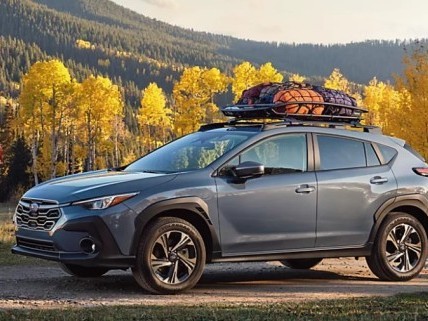
Brand new hybrid system, range over 1000km! New model Subaru Crosstrek coming in December!
RobertOct 22, 2024

Subaru Registers New EV Trademark, Signaling Strategic Shift
Kevin WongAug 8, 2025
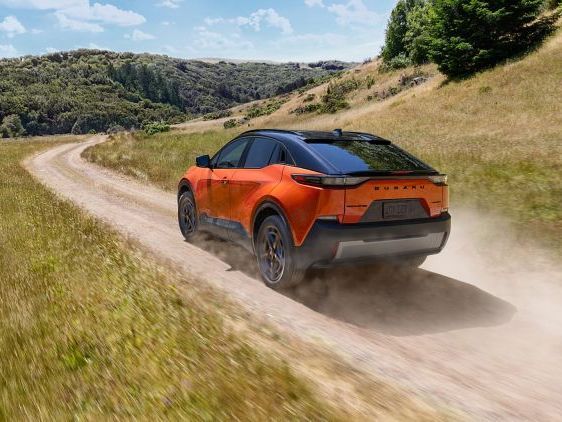
Uncharted is Subaru's first front-wheel-drive car, with a range of up to 482 kilometers.
MichaelJul 18, 2025
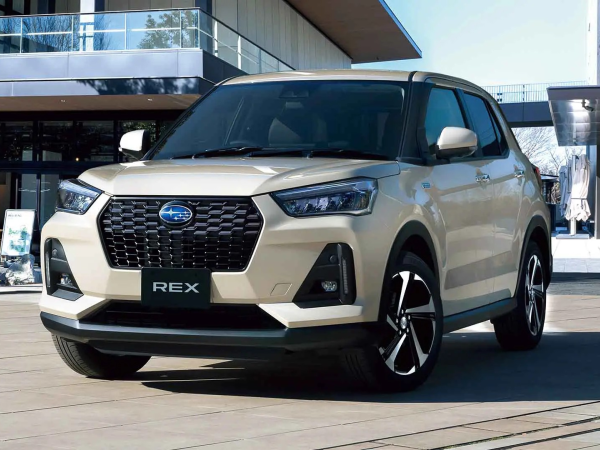
SUBARU REX Hybrid vs Nissan e-POWER: Spot the Difference!
WilliamJun 24, 2025
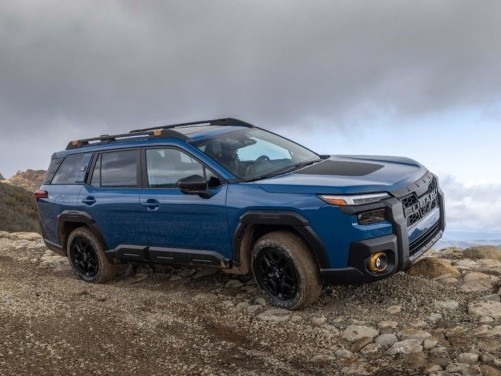
All-New Subaru Outback Debuts with SUV-Inspired Styling
JohnApr 22, 2025
View More





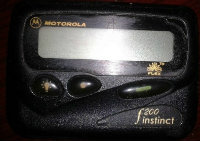


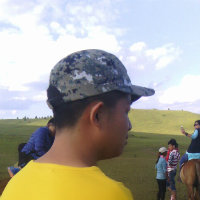



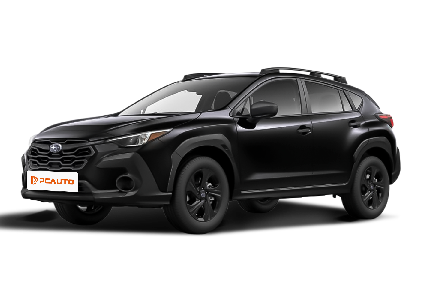





Pros
Cons